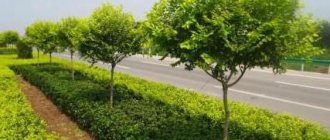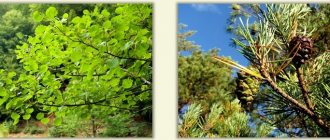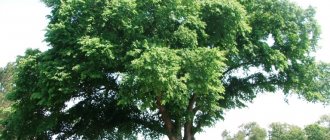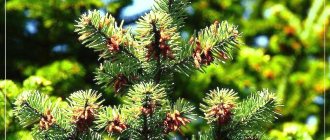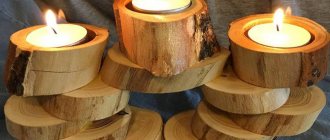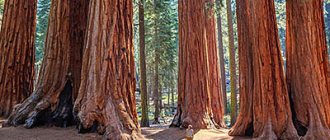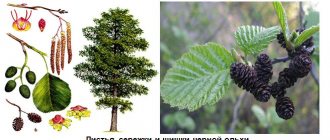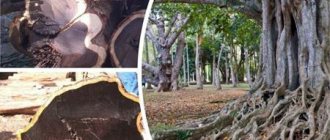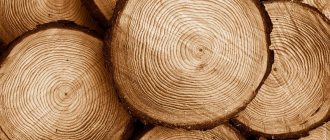Pine is the queen of the forest; it has been glorified more than once in works of literature, because it is the one that is always green and never ages.
The typical species is Scots pine, so let's take a closer look at this tree.
The lifespan of pine is about 300 years, but there are species in which the love of life is more pronounced, and they stand for about 5,000 years; such a representative of long-livers is the pine tree species, which took root in the USA.
Speaking of her roots, they are unique in their own way. Quite strong tap roots tend to deep into the soil. Thanks to its ability to penetrate different soils, pine received the title - the almighty tree.
She can control any terrain, be it rocky, sandy, arid, it doesn’t matter. You can also find pine trees over ravines or in forests.
As for weather conditions, pine is not very whimsical; it easily tolerates snow, storms, frosts, winds and even drought. But still, the most suitable climate is temperate.
More often than not, pine always chooses clean air for its habitat; it does not tolerate a polluted environment.
Application
Pine is a unique plant that is widely used in construction and many other industries; is the main source of lumber.
Resin wood is rich in its chemical composition, and it is also often used as a raw material for the production of various objects.
It should be noted the use of Scots pine, and in particular its fruits, for medicinal purposes.
An alcohol solution of cones helps after a stroke, since alcohol breaks down the substances contained in the cones, and they, in turn, strengthen the neurons that are affected during brain strokes. Also, this infusion helps strengthen the walls of blood vessels, helps stop tinnitus, and also improves memory.
A teaspoon of this tincture in a glass of hot water is enough to strengthen your body’s immune system.
Types of pine trees and features of their wood
It is known that more than 50 species of pine are widespread in Russia. Some of them, due to their properties and wood texture, are valued in the wood processing industry.
Ordinary
Scots pine is found throughout Siberia, the Urals and most of Europe. The average life expectancy is about 200 years, although there are trees that have crossed the 400-year mark.
The wood of this type of pine is one of the densest, contains a large amount of resin, and therefore is less susceptible to rotting. The properties of wood that are valuable in the manufacture of lumber, such as hardness and ease of processing, depend mainly on soil moisture and average temperature conditions.
Pine wood, which grows on dry soils, is in demand. The environmental friendliness of pine is rated five points; it is easy to breathe in pine forests, and special essential substances help destroy various infectious pathogens.
Photo of Scots pine
Siberian
Siberian pine also has another name - cedar pine. In favorable conditions, this tree grows up to 800 years. The bark of this tree is quite thin, so mechanical damage is easily caused to the wood and fungi can easily penetrate inside, causing rot.
Siberian pine can be distinguished from Scots pine by its larger resin ducts. The wood of this tree is soft, easy to process, and retains heat well. The resinous, persistent odor repels many insects, so the wood is used to make home furniture and flooring boards.
In ancient times, it was from this tree that dishes for various dairy products were made. There were no germs in it, and therefore the milk remained fresh for a long time. Ease of processing is rated five points if there are few knots on the tree.
And this is what Siberian pine looks like in the photo
Karelian
This type of tree grows in the northern regions of our homeland and is probably why it has the most popular characteristics in construction. Karelian pine has a smaller height compared to its southern relatives. It can be distinguished by its densely spaced growth rings.
The wood of this tree is especially durable, resistant to rotting processes, and is rarely affected by insect pests and fungi. Products made from Karelian pine are distinguished by the highest durability. It is Karelian pine logs that builders recommend laying on the lower crowns of a wooden house.
Photo of Karelian pine
Crimean
Crimean pine is a southern subspecies of tree that grows mainly on the slopes of the Crimean mountains. You can distinguish pine from other types of pine by its grayish bark, since other trees of this coniferous species have a reddish tint. Due to its high gas resistance, this tree is widely used for landscaping city streets in southern cities.
The high resin content makes it possible to use Crimean pine wood in the manufacture of port structures, dams, musical instruments and furniture.
Photo of Crimean pine
Ship's
Ship pine is not a specific type of this tree species, but a separate tree that differs in certain characteristics. Ship pine is a tree that has a particularly smooth trunk and the smallest number of knots.
The tree must have a certain hardness and strength, and the content of resinous substances in it is also taken into account. Previously, entire groves of ship trees were specially grown, and they were given special care and supervision.
This is what ship pines look like
Blue
Blue pine is often called a special variety of this tree - Glauca. The needles of this tree have a silvery-bluish tint. Often this tree is grown specifically for decorative purposes. The appearance of this type of pine is rated five points; this tree can successfully replace the valuable blue spruce.
Photo of blue pine
Pine buds
While walking through the forest or in your garden, pay attention to the young buds, they smell wonderfully like resin. These buds contain pine pollen, which has a healing effect on the body.
You can collect these anthers and make homemade pine honey. It will help you treat coughs and tuberculosis pathologies, because it is a ready-made set of microelements and vitamins, a good substitute for a trip to the pharmacy.
Preparing this honey is very simple; the buds can be covered with sugar or added to ready-made honey. This will keep your body in good shape in the winter, but you need to take care of this in the spring, since at this time the kidneys are the youngest.
Life cycle
Biologists use this term to mean the development of an individual from conception to reproduction. The life cycle of Pinus sylvestris is not very complex. It is implemented as follows.
- Seed germination. First, the root primordium sprouts, and then the shoot rises up. The root and shoot should begin to function immediately after the supply of nutrients runs out. If the seedling is not damaged, the tree will begin to develop on its own.
- The transition from a seedling to a tree with species characteristics of Pinus sylvestris occurs at the age of two. The plant reaches sexual maturity at 30-40 years of age.
- Male and female cones form on the same tree, but on different branches. The male cones produce pollen that is dispersed by the wind. To facilitate this process, each pollen specimen has 2 air bubbles. Once in the ovules of female cones, the pollen is stored until next summer. This happens in tightly closed green cones.
- The following summer, the pollen germinates and fuses with the egg. A zygote is formed, from which the seed is formed. The pine embryo is immersed in the gametophyte with accumulated nutrients. This is how the primary haploid endosperm is formed.
- 1.5 years after the appearance of young cones, seeds are ejected. The cones open on warm sunny days.
We recommend that you familiarize yourself with Oak bark for gums
This completes the development cycle of Scots pine, which, depending on conditions, lasts several decades.
Photo of pine
Cherry - description of the main varieties, rules of planting and care + 68 photosPeach - cultivation, reproduction, diseases and varieties + 81 photos
- Cedar tree - description, cultivation, types of cedar and its beneficial properties + 77 photos

